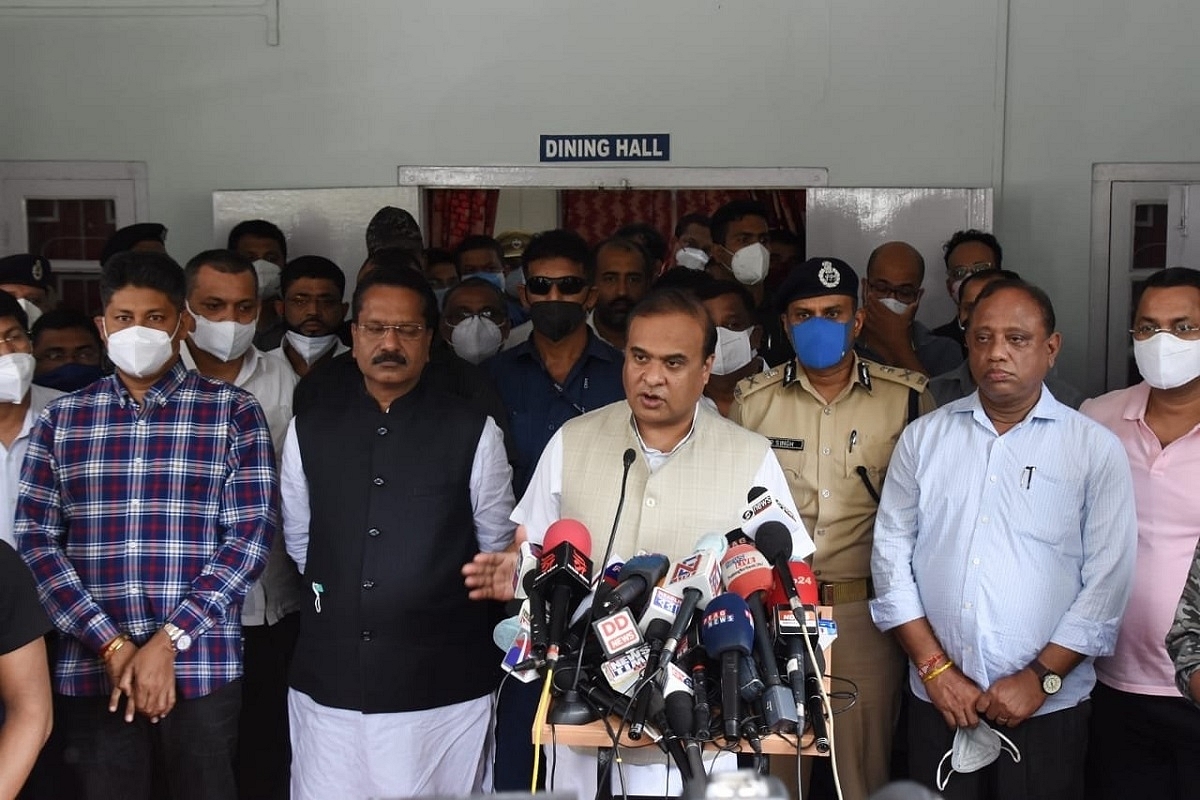News Brief
Explained: Assam-Mizoram Boundary Dispute And What Tools Centre And States Have To Resolve It
- Since Mizoram gained statehood in 1987, its border with Assam has been a site of persistent clashes

Source: @himantabiswa/Twitter
On Monday, the boundary dispute between Assam and Mizoram turned violent and the exchange of fire between Assam police personnel with their Mizoram counterparts left six — five Assam police personnel and a civilian — dead. The clashes in the border town of Vairengte also left at least 60 persons from Assam injured.
The incident came less than two days after Union Home Minister Amit Shah held a meeting with the Chief Ministers of the northeastern States in the Meghalaya capital of Shillong for resolving the inter-State boundary disputes.
The Dispute
The 165-km Assam-Mizoram border dispute has its origin in the British era. There were two demarcations of the boundary, first in 1875. Under the Bengal Eastern Frontier Regulation of 1873, the British separated the then Lushai Hills, from the plains of Cachar in Assam to introduce the inner line permit (ILP) regime.
An Indian citizen from outside the protected area needs the ILP to visit it. It was introduced in the northeast.
In 1933, the British again conducted demarcations in the northeast. This time, for separate districts, based on culture, linguistic and tribal lines. This led to a new boundary which separated the Lushai Hills, Cachar, and the former princely state of Manipur. As part of this trifurcation, some parts of Lushai Hills went to Manipur.
In 1972, Mizoram was separated from Assam as a Union territory on basis of 1933 demarcation.
The crux of the dispute is that Mizoram rejects the 1933 demarcation of districts saying that Mizo tribal chiefs were not consulted then, while Assam backs the 1933 demarcation. When Mizoram gained statehood in 1987, Mizo tribal leaders raised the border dispute claiming that Assam had taken away their land.
Since then, the border has been a site of persistent clashes.
The Constitutional Remedy
The Indian Constitution gives a free hand to the union parliament to demarcate the boundary, area, name etc. of the states.
Assam Chief Minister (CM) Himanta Biswa Sarma yesterday said that Assam will abide by any law enacted by Parliament that makes it even cede its land to another state.
“It is the responsibility of the Centre to define the boundary and we will abide by it... if tomorrow the Parliament enacts a law by which our land can be given to another State, we will do so but till then we will protect our constitutional boundary,” he told a press conference.
He also said Assam will move the Supreme Court seeking protection of the Innerline Forest Reserve from destruction and encroachment and deploy three commando battalions in Cachar, Karimganj and Hailakandi districts bordering Mizoram to strengthen security.
In 2019, Assam and Mizoram agreed to maintain a status quo and have no man’s land in the disputed area. However, clashes have continued.
In October 2020, clashes left several injured on both sides and resulted in a 12-day blockade of National Highway 306, the lifeline to Mizoram. Days before this, on 9 October, similar violence took place on the border of Karimganj (Assam) and Mamit (Mizoram) districts.
In the light of this several immediate steps are required to be taken by both the states.
They should operationalise a standard procedure to be followed in case of any situation on the border, including quick contact between high functionaries including the CMs. The procedure must also list down steps of de-escalation. Both the states need to train their security personnel, and also spread awareness to people that any loss of life and damage to property will not result in a solution. It should be hammered into people's heads that the loss of lives resulting from repeated clashes is both needless and useless, and the political class needs to take the initiative. Buffer zones, joint patrols etc. can increase trust and reduce the possibility of clashes.
The Mizoram police personnel were accused of celebrating after the clashes. "..the video evidence that we have of the Mizo forces celebrating after attacking our people has saddened and hurt us," the Assam CM said yesterday. State governments should lay down that such behaviour would automatically start an inquiry and subsequent punishment if found guilty. The personnel should have clear instructions for zero tolerance policy towards anti-social elements that cause trouble in the border region.
In the medium term, the state governments along with the Centre should carry forward negotiations with an open mind to settle the dispute.
However, in the longer term, a paradigm shift is needed in the thinking of the states where territorial ethnocentrism is rife. Clashes like the recent ones reflect a failure to build infrastructure, connectivity and economic supply chains etc. that reduce the salience of the former in the favour of shared prosperity and sustained contact between the people.
Support Swarajya's 50 Ground Reports Project & Sponsor A Story
Every general election Swarajya does a 50 ground reports project.
Aimed only at serious readers and those who appreciate the nuances of political undercurrents, the project provides a sense of India's electoral landscape. As you know, these reports are produced after considerable investment of travel, time and effort on the ground.
This time too we've kicked off the project in style and have covered over 30 constituencies already. If you're someone who appreciates such work and have enjoyed our coverage please consider sponsoring a ground report for just Rs 2999 to Rs 19,999 - it goes a long way in helping us produce more quality reportage.
You can also back this project by becoming a subscriber for as little as Rs 999 - so do click on this links and choose a plan that suits you and back us.
Click below to contribute.
Latest